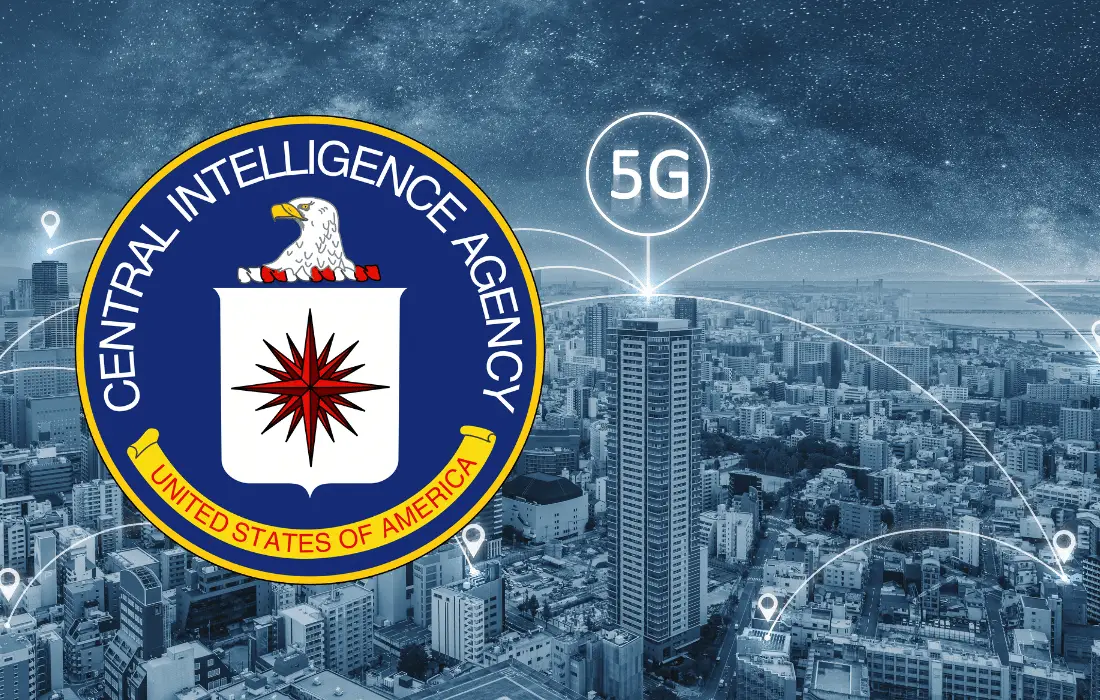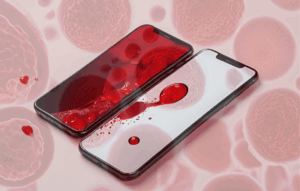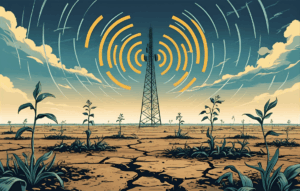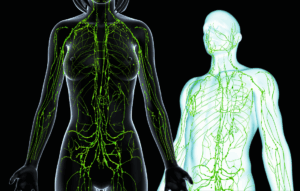In recent news, Catherine Herridge has shed light on allegations of gaslighting and cover-ups within the intelligence community concerning Havana Syndrome. This enigmatic phenomenon, initially dismissed as a psychological anomaly, has left countless victims struggling with unexplained health issues, ranging from cognitive dysfunction to debilitating vertigo. The claims of a whistleblower—referred to as “Alice”—have only deepened the controversy, pointing to systemic denial and neglect by intelligence agencies.
At the same time, a broader discussion about the health effects of electromagnetic radiation from technologies like 5G is gaining traction. Could these invisible forces—whether targeted or ambient—be influencing human health and behavior more than we realize? As we delve into the recent whistleblower revelations and the science behind electromagnetic fields, it becomes evident that the implications extend far beyond Havana Syndrome, touching every aspect of modern life.
BREAKING: CIA Whistleblower Comes Forward
— Catherine Herridge (@C__Herridge) December 30, 2024
Former Intelligence Officer Claims Career Ending Injuries Caused By Foreign Directed Energy Weapon
Leaked Defense Department Letter Acknowledges Injuries and Experiences “Are Real”
“It’s a Cover Up...It Should Be Terrifying for All… pic.twitter.com/e9FgUwYmss
Havana Syndrome and the Whistleblower Revelations
Havana Syndrome first emerged in 2016 when U.S. diplomats and intelligence officers stationed in Cuba began reporting a baffling array of symptoms. These included severe headaches, hearing loss, nausea, memory issues, and difficulty concentrating. Initially dismissed as psychosomatic or stress-related, subsequent investigations suggested potential exposure to directed energy weapons or surveillance technologies. The symptoms have since been reported by over 300 individuals, including diplomats, military personnel, and their families.
Recent allegations by a whistleblower known as Alice have reignited the debate. Alice, a former CIA officer, alleges that the intelligence community actively suppressed efforts to investigate these health incidents, even going so far as to revoke her security clearance on the grounds of psychological instability. She claims that the agencies’ denial of Havana Syndrome’s validity has left victims without the support they need, forcing them to question their own experiences and health challenges. According to Alice, the CIA and other agencies have attempted to “thwart Congressional investigative efforts,” creating an atmosphere of distrust and fear.
Alice’s claims are supported by others who have faced similar roadblocks in seeking medical care or compensation. Many victims have described being gaslit, with their symptoms dismissed as unrelated to their work environments. These allegations point to a troubling pattern of neglect, one that raises serious questions about the intelligence community’s transparency and willingness to protect its personnel.
The official stance on Havana Syndrome remains murky. A 2023 report by the National Intelligence Council concluded that it was “very unlikely” foreign adversaries were responsible for the incidents, a position that aligns with findings from five intelligence agencies. Yet Congressional reports and testimony from other experts suggest otherwise, pointing to the possibility of attacks by foreign adversaries using advanced energy weapons. This discrepancy underscores a lack of consensus within the government, leaving victims caught in the crossfire of bureaucratic denial and scientific uncertainty.
The Role of Electromagnetic Fields in Health
While Havana Syndrome appears to involve targeted energy attacks, it also raises broader questions about the impact of electromagnetic fields (EMFs) on human health. This discussion becomes particularly relevant with the proliferation of 5G technology, which operates on higher-frequency bands than previous wireless networks. Though marketed as a revolutionary advancement for connectivity and data transfer, 5G has also become a lightning rod for concerns about its potential health implications.
Electromagnetic radiation, including the non-ionizing radiation emitted by 5G towers and devices, interacts with biological systems in ways that are not yet fully understood. Emerging evidence suggests that prolonged exposure to certain EMF frequencies could have subtle but cumulative effects on the body, contributing to oxidative stress, inflammation, and neurological disturbances.
Whistleblower Claims in the Context of 5G and EMFs
Alice’s allegations that energy weapons caused her symptoms in Africa bear striking parallels to the potential effects of prolonged EMF exposure. Although directed energy weapons and 5G operate on different principles, both involve the manipulation of electromagnetic waves. This shared mechanism warrants a closer examination of how invisible frequencies might affect human biology, whether through deliberate targeting or ambient exposure.
The intelligence community’s alleged dismissal of Havana Syndrome as psychological could also echo broader trends in the medical and scientific communities. Many EMF-related symptoms—such as fatigue, headaches, and cognitive issues—are similarly dismissed, often attributed to stress or psychosomatic factors. This overlap suggests a deeper need to investigate how EMFs, both natural and artificial, interact with human physiology.
Potential Health Impacts of 5G
The rollout of 5G technology has ushered in an era of unprecedented connectivity, but it has also sparked concerns about its safety. Unlike previous generations of wireless networks, 5G operates on millimeter waves (MMWs), which have shorter wavelengths and higher frequencies. These characteristics enable faster data transfer but also raise questions about how such frequencies might affect biological tissues.
Research into the health effects of EMFs has identified several areas of concern:
- Oxidative Stress and Cellular Damage: Prolonged exposure to EMFs can increase the production of reactive oxygen species (ROS), leading to oxidative stress. This imbalance between ROS and antioxidants is linked to chronic inflammation, DNA damage, and accelerated aging.
- Disruption of the Blood-Brain Barrier: Some studies suggest that EMFs can weaken the blood-brain barrier, a protective layer that prevents harmful substances from entering the brain. A compromised barrier may increase the risk of neuroinflammation and cognitive decline.
- Neurological and Behavioral Effects: EMF exposure has been associated with sleep disturbances, mood swings, and memory issues. While these effects are often subtle, they can accumulate over time, particularly in high-exposure environments.
- Hormonal Dysregulation: Emerging evidence suggests that EMFs may interfere with endocrine function, potentially altering stress hormone levels and circadian rhythms.
The Intersection of Havana Syndrome and Everyday EMF Exposure
The experiences of Havana Syndrome victims and the broader population exposed to 5G share a common thread: the challenge of proving causality. Whether dealing with directed energy weapons or ambient EMFs, the symptoms reported are often diffuse and difficult to measure. This ambiguity makes it easier for skeptics to dismiss claims and harder for victims to obtain recognition or relief.
What sets Havana Syndrome apart is the apparent intent behind the energy attacks. Yet, the widespread rollout of 5G technology raises the possibility that unintentional exposure to EMFs could have similar cumulative effects on health. As more devices connect to 5G networks, the potential for widespread, low-level exposure increases, making it essential to understand and mitigate these risks.
Mitigating the Risks: Practical Steps and EMF Protection

Given the growing body of evidence linking EMF exposure to health concerns, individuals can take proactive measures to protect themselves. One effective approach is to incorporate solutions like Aires Tech products, which are designed to harmonize electromagnetic fields and reduce their biological impact. Aires Tech devices are particularly beneficial for those who spend significant time in high-EMF environments, such as urban areas or workplaces with dense wireless connectivity.
Other strategies for minimizing EMF exposure include:
- Limiting Device Usage: Reduce the time spent on electronic devices, especially during sleep hours.
- Creating Low-EMF Zones: Designate specific areas in your home, such as bedrooms, as low-EMF zones by turning off Wi-Fi at night and avoiding unnecessary electronic devices.
- Prioritizing Grounding: Activities like walking barefoot on natural surfaces can help restore the body’s natural electrical balance, counteracting the effects of EMF exposure.
- Educating Yourself and Others: Awareness is a powerful tool. Understanding the risks and benefits of modern technologies empowers individuals to make informed decisions about their exposure.
The Path Forward: Balancing Progress and Health
The recent whistleblower revelations about Havana Syndrome serve as a stark reminder that technological advancements often come with hidden costs. As the debate over 5G and EMF exposure continues, it is crucial to prioritize research, transparency, and the well-being of those affected. We can better understand the unseen forces shaping our health and behavior by drawing connections between targeted energy attacks and everyday EMF exposure.
In the age of rapid technological progress, finding a balance between innovation and safety is more important than ever. We can navigate this complex landscape with greater confidence and resilience by staying informed, advocating for accountability, and investing in solutions like Aires Tech.
🚨 A former CIA officer, known only as 'Alice,' has come forward alleging that the agency ignored the plight of Havana Syndrome victims. This echoes a worrying trend: Are we also overlooking the health implications of electromagnetic radiation from new technologies? With 5G's…
— kyletothemoon (@tothemoonhealth) January 9, 2025


















